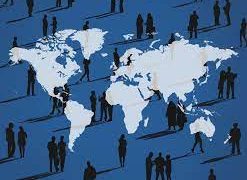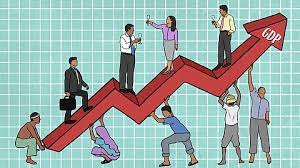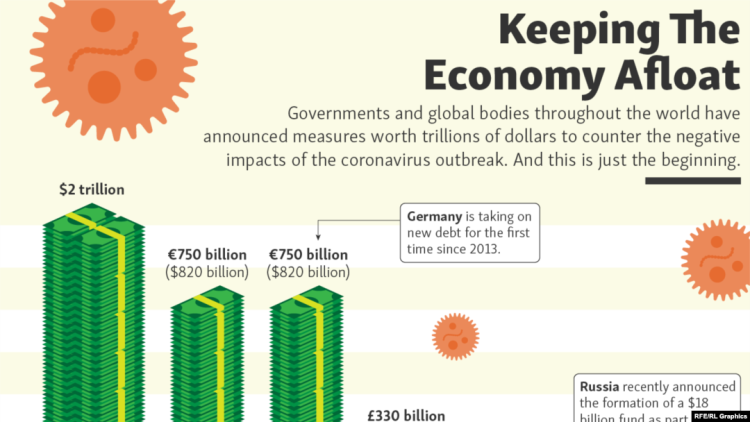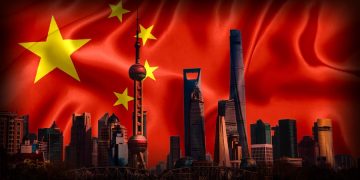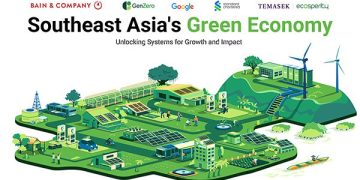A silent giant in plain sight
While headlines obsess over supply chains, semiconductor wars, or fluctuating oil prices, the most profound transformation of the global economy is happening quietly—in offices, hospitals, classrooms, studios, and cloud servers. The service sector, long treated as a supporting actor to manufacturing, has now taken center stage as the primary driver of global growth.
In 2025, services account for around 68% of global GDP, according to the World Bank, and employ over 50% of the global workforce for the first time in recorded history. From digital platforms and healthcare to logistics, education, and creative industries, the “Service Economy 2.0” represents not merely a shift in structure but a redefinition of what productivity and prosperity mean in the 21st century.
The question is no longer whether the world is post-industrial—it is how fast this transformation can sustain itself in the face of slowing trade, aging populations, and technological disruption.
From factory floors to cloud servers
The rise of the service economy has been long in the making. In the decades following World War II, manufacturing powered industrial expansion. But since the 1990s, globalization, automation, and information technology have steadily eroded manufacturing’s share of output, even as total production rose.
In the United States, services now make up 77% of GDP and 85% of employment. The European Union sits at 73% of GDP in services. Asia, historically the world’s factory, is catching up fast: China’s service sector now contributes 56% of its GDP, while India’s reaches a striking 61%.
“This is not de-industrialization—it’s evolution,” argues Dr. Leena Hoffmann, an economist at the OECD. “Production has not disappeared; it has been virtualized, distributed, and serviced.”
Manufacturing itself has become service-intensive: software, maintenance, logistics, and customer experience now make up much of the value chain. Every product is surrounded by a halo of services—from design and marketing to financing and after-sales care.
The data economy: Services without borders
Digitalization has redefined what counts as a service. Cloud computing, data analytics, cybersecurity, and artificial intelligence are now integral components of national economies.
The IMF Digital Services Outlook 2025 estimates that cross-border trade in digital services reached $3.8 trillion, surpassing global merchandise exports in growth rate.
Platforms such as Amazon Web Services, Google Cloud, and Alibaba Cloud have turned computing itself into a service commodity. Meanwhile, app ecosystems—from Netflix to Spotify to Duolingo—show how cultural consumption has become subscription-based and borderless.
“Software is eating the world,” Marc Andreessen famously said a decade ago. In 2025, services are eating software, turning digital interaction into a perpetual flow of micro-transactions, data exchanges, and personalized experiences.
The World Trade Organization now classifies “mode 1 trade”—services supplied across borders digitally—as the fastest-growing component of global trade, expanding at 12% per year, even as physical goods trade stagnates.
Asia’s new advantage: Servitization of emerging economies
If the 20th century belonged to the industrializing West, the 21st may belong to the service-driven South.
Countries like India, the Philippines, and Malaysia have turned services into export engines. India’s IT and business process outsourcing (BPO) industries now generate over $300 billion in annual revenue, employing more than 5 million professionals.
The Philippines’ call-center and shared-service sectors contribute nearly 8% of national GDP, while Malaysia is investing heavily in digital finance, healthcare tourism, and logistics services.
According to the Asian Development Bank, Southeast Asia’s service exports are growing at twice the global average, supported by English-speaking talent, affordable connectivity, and the digitalization of SMEs.
“Emerging Asia has discovered that services are no longer a privilege of advanced economies,” says Tan Mei Ling, chief economist at Bank Negara Malaysia. “We’re building a competitive edge in ideas, not just in labor costs.”
Services and resilience: Why they keep economies stable
One reason the service sector has become the backbone of modern economies lies in its resilience to shocks.
During the pandemic, services such as healthcare, logistics, and online education became lifelines. Today, as geopolitical tensions and trade fragmentation disrupt manufacturing, services offer a stabilizing cushion.
1. Low trade exposure
While goods depend on complex global supply chains, many services—especially domestic healthcare, retail, education, and digital platforms—are insulated from border disruptions. This makes service-dominated economies less vulnerable to tariffs or shipping delays.
2. Labor intensity and job creation
Service industries absorb more labor relative to capital than manufacturing. Healthcare, education, hospitality, and creative sectors continue to generate millions of jobs, even as automation replaces factory work.
The International Labour Organization reports that nine out of ten new jobs created globally between 2020 and 2025 have been in services.
3. Flexibility and scalability
Services adapt faster to technology shifts. While building a factory can take years, launching an online platform or fintech app can happen in months. This flexibility makes services the agile component of global growth.
The productivity puzzle
Yet for all its expansion, the service economy faces an enduring challenge: low productivity growth.
Unlike manufacturing, where automation and scale efficiencies are straightforward, many services depend on human interaction—think nursing, teaching, or counseling. Economists call this the “Baumol cost disease”: as wages rise in low-productivity services, costs increase without matching productivity gains.
According to the OECD, labor productivity in services grows at only 1.2% annually, compared with 3.1% in manufacturing. This gap explains much of the global slowdown in overall productivity since the early 2000s.
However, technology is beginning to blur this line. Generative AI, telemedicine, automated logistics, and adaptive learning platforms are enhancing efficiency across services once considered unscalable.
“AI is the new assembly line,” says MIT economist Erik Brynjolfsson. “It is to services what electricity was to factories—a general-purpose catalyst for transformation.”
Healthcare: The human-machine frontier
Nowhere is this more evident than in healthcare. Global health spending reached $9.2 trillion in 2025, or about 10% of world GDP. Aging populations, pandemic preparedness, and digital health platforms are driving expansion.
Telemedicine, once a niche, has become mainstream. In the U.S., over 60% of consultations now occur via hybrid or online models. In China, AI-based diagnostic tools handle tens of millions of patient interactions monthly.
This hybrid model—human empathy augmented by machine precision—is reshaping healthcare as both an industry and an employment anchor.
Developing nations are leveraging medical tourism and health services exports. Thailand, Malaysia, and Turkey have positioned themselves as regional medical hubs, attracting millions of international patients annually.
Education: The service that multiplies all others
Education, another cornerstone of the service economy, has undergone similar transformation. The global ed-tech market is projected to surpass $500 billion by 2026.
From online universities to skill-based micro-credentials, education has become continuous, personalized, and borderless. The pandemic normalized distance learning; AI is now personalizing it.
In emerging economies, access to quality education services is fueling upward mobility. In India, digital education platforms reach over 120 million users; in Africa, mobile learning initiatives are bridging the gap between rural and urban literacy.
Each new learner is both a beneficiary and a contributor to future productivity—making education the most “multiplier-rich” service in the modern economy.
Creative and cultural industries: Soft power meets hard revenue
Film, design, gaming, and music collectively form a $2.5 trillion global industry, growing faster than traditional manufacturing exports.
K-pop, Hollywood, Nollywood, and anime are not merely entertainment exports—they are soft-power vectors and employment engines. Streaming services like Netflix and Disney+ have localized content across 200 countries, transforming cultural production into a global service trade.
“The cultural economy is the new oil,” says UNESCO analyst Clara Silva. “It generates foreign exchange, builds national identity, and requires minimal natural resources.”
This diversification of services beyond finance or IT underscores the broadening of economic creativity—where value comes from stories, design, and human imagination.

Green services: Sustainability as business model
Environmental sustainability has emerged as a new frontier of service innovation. Energy auditing, recycling logistics, carbon consulting, and ESG compliance are growing professions.
The “green service” economy is expanding at 9% annually, according to PwC. Cities such as Copenhagen, Singapore, and Vancouver are positioning themselves as global hubs for sustainability expertise.
In 2025, the carbon management industry employs more than 4 million people globally—more than coal mining.
Sustainability has turned from a regulatory burden into a service export opportunity, blending environmental goals with economic growth.
Financial and digital intermediation: The invisible infrastructure
Every service economy rests on invisible scaffolding: finance and connectivity.
Fintech has democratized access to credit, insurance, and payments. Digital wallets now process over $15 trillion annually worldwide. In Africa and Southeast Asia, mobile money has become the de facto financial system.
Meanwhile, data centers—the physical backbone of the digital economy—consume more electricity than the entire nation of France but enable trillions in online transactions daily.
The line between finance, technology, and services is blurring fast. “Every company is now a fintech company in some way,” notes JP Morgan strategist Lara Tan. “Payments and data are the bloodstream of modern commerce.”
The geography of service hubs
Just as manufacturing once clustered in industrial belts, services now concentrate in knowledge corridors:
- Bangalore for tech services,
- Singapore for finance and logistics,
- Dubai for trade and tourism,
- London and New York for global finance,
- Seoul and Tokyo for creative industries.
These hubs are magnets for talent, data, and capital. Yet they also expose new inequalities: rural and smaller urban regions often lag behind in digital infrastructure and skills.
The World Bank warns of a “two-speed service economy”: hyper-productive digital hubs versus stagnant traditional services. Bridging that divide will be crucial for inclusive growth.
Gender and inclusion: Services as social equalizer
The service sector has also reshaped gender dynamics in employment.
Globally, women now make up 47% of service-sector jobs, compared to just 22% in manufacturing. Healthcare, education, retail, and finance have opened new pathways for women’s economic participation.
In developing economies, services offer flexible employment that accommodates caregiving responsibilities and remote work. Yet wage gaps persist—female workers in services still earn around 17% less than their male counterparts, according to UN Women’s 2025 report.
Closing that gap could inject an estimated $3 trillion into global GDP by 2030. Inclusion, therefore, is not merely ethical—it is economic.
Services meet AI: The coming productivity wave
The integration of artificial intelligence, automation, and data analytics is propelling the service economy into its next phase—Service Economy 2.0.
Chatbots replace customer service lines; AI agents handle accounting, logistics, and even legal drafting. In healthcare and education, AI copilots augment professionals rather than replace them.
A 2025 report by McKinsey Global Institute projects that AI could increase global service-sector productivity by up to 40% over the next decade, equivalent to $7 trillion in added output.
However, the transition will be uneven. High-skill workers stand to benefit from augmentation, while low-skill service jobs may face automation risk. Policymakers must therefore balance innovation with inclusion through retraining, digital literacy, and social protection.
Policy and infrastructure: The scaffolding of service growth
Governments are increasingly designing policy frameworks for service-led development.
- The EU’s Services Directive 2.0 seeks to harmonize digital service standards across member states.
- ASEAN’s Comprehensive Services Integration Plan aims to liberalize cross-border data and professional services by 2030.
- The U.S. CHIPS and Science Act, though manufacturing-focused, indirectly fuels service growth through research funding and innovation ecosystems.
Public investment in broadband, education, and healthcare infrastructure acts as both an economic stimulus and a foundation for private-sector service expansion.
In emerging economies, regulatory modernization—such as simplifying business licensing and ensuring data protection—is essential to attract global service outsourcing.
Risks and vulnerabilities
For all its promise, the service economy is not invincible.
1. Automation displacement
Routine service tasks—data entry, call centers, retail checkout—are increasingly automated. Without reskilling programs, millions could be left behind.
2. Informality and precarity
In developing nations, many service jobs remain informal—without contracts, benefits, or protection. This limits social security coverage and productivity measurement.
3. Inequality between digital and traditional services
While tech-based services thrive, personal and public services like childcare and eldercare lag behind in wages and recognition.
4. Cross-border regulation and data sovereignty
As services globalize digitally, countries grapple with how to tax, regulate, and secure cross-border data flows. Fragmented digital regulations could stifle innovation.
Looking ahead: The age of intangible power
The rise of Service Economy 2.0 marks a fundamental shift in how nations compete. Power no longer resides in raw materials or manufacturing capacity alone, but in creativity, data, and trust.
Countries that master the “service stack”—education, digital infrastructure, and regulatory agility—will shape the future of prosperity.
The World Economic Forum predicts that by 2035, services will account for over 75% of global GDP, creating a world where economic growth depends less on physical output and more on the flow of knowledge and experience.
But this transformation carries an ethical question: can an economy built on intangibles deliver tangible well-being?
For policymakers and citizens alike, the challenge will be to ensure that the quiet revolution of services remains inclusive, resilient, and sustainable.
Conclusion: The invisible engine of modern prosperity
The service sector has long been underestimated precisely because it is invisible—no smokestacks, no assembly lines, no shipping containers. Yet it is this very invisibility that makes it powerful: adaptable, human-centric, and knowledge-driven.
In 2025, the global economy stands on a paradox. Industrial output is slowing, trade is fragmenting, yet growth continues—powered by teachers, nurses, developers, designers, and entrepreneurs.
The Service Economy 2.0 is not a footnote to globalization; it is its next chapter. And in that chapter, the world’s wealth will be written not in tons of steel or barrels of oil, but in bytes, ideas, and the quiet labor of service itself.


